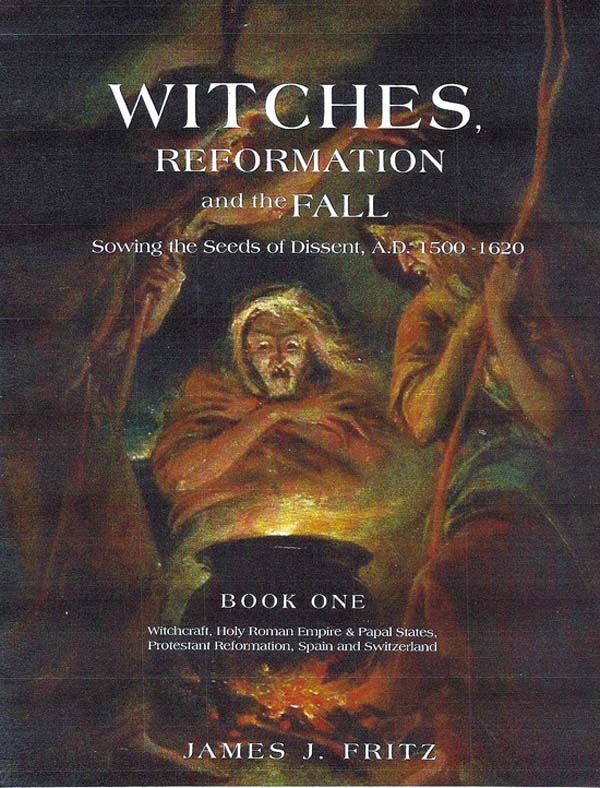Witches, Reformation And The Fall: Sowing The Seeds Of Dissent, 1500-1620, A. D. New Publication Recently Printed
By Karl Pass - January 17, 2025
Author and historian Jim Fritzs most recent publication is volume one of a trilogy titled, Witches, Reformation and the Fall: Sowing the Seeds of Dissent, 1500-1620, A. D. This work addresses the constant question as to why we have become a polarized society in Europe and America in a time of a declining Christian world. The book relates in copious citations, photographs, prints and maps of the connection of Christianity with the scapegoating of people accused of witchcraft throughout Europe and later America. At a time in history when victims accused of witchcraft were burned at the stake, the work contains a sorrowful letter from Johannes Junius, Mayor of Bamberg, Germany, to his daughter on the eve of his execution for witchcraft. Illustrated throughout are pictures of medieval cathedrals and gargoyles, along with an explanation of the latters meaning and purpose in the Christian world. Fritz describes Europe during the Holy Roman Empire and its three main emperors, Maximilian I, Charles V and Philip V, who struggled to maintain a Roman Catholic hegemony in the face of the rising Protestant Reformation. The outcome was to have a long lasting effect on Western Christian civilization. The Papal States and the impact of the Reformation are described as its ideology led by Martin Luther permeated first Spain and Switzerland. Book two of this trilogy (soon to be published) will further describe the impact of witches and the nexus between fear of plague, famine, death and warfare with superstition and scapegoating. It will detail in maps, timelines, and colorful printed illustrations the impact and warfare between the iconoclasts of John Calvin and the Roman Catholic world that was omnipresent. France, the Netherlands, Eastern Europe and Scandinavia were all impacted by the Reformation, and always present was the threat from the west of the Ottoman Empire seeking to conquer more Christian lands. Fritzs next project plans to be a comprehensive description of the Five Nations, Susquehanna and its multiple dislocated tribes and cultures that lived along the Susquehanna River and in the Delaware Valley pre-William Penn and after. The work wishes to address the material culture that Native Americans enjoyed in their trade with James Logan, secretary to William Penn in the first decades of the 17th-century, but also their customs, religion and warfare. Titled Rivertowns on the Susquehanna, it will begin with the relationships between the Swedes, Finns and Dutch before the English began to enter the trade picture with the Lenni Lenapes in the Delaware Valley. Jim Fritz has authored several articles and the book The Pennsylvania Dutch (German) Experience, 1681-1783 for the Pennsylvania German Society. To learn more, email the author at jjjfritz@gmail.com.


SHARE
PRINT